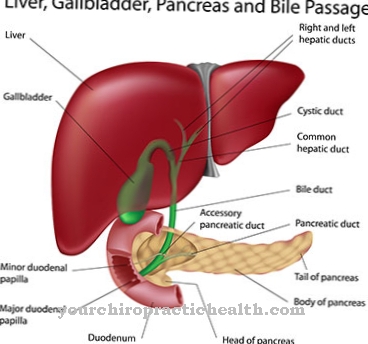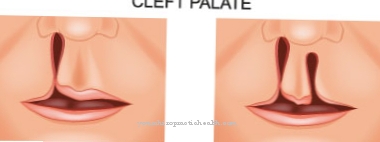In the Type III allergy it is a so-called "immune complex type" reaction. In this process, antigen-antibody complexes are deposited in the vessel walls of the blood vessels and lead to local inflammation there, which can narrow and clog the vessels and destroy the affected organs.
What is Type III Allergy?
The classification of the allergy types (incl Type III allergy) in four different categories is quite "old hat" in medicine: The scientists Coombs and Gell published this classification in 1963 and since then it has been an integral part of medical studies and training in medical nursing.
According to the current state of immunological research, the Coombs and Gell classifications can actually be considered obsolete these days. Nevertheless, it is often used for didactic reasons and is suitable for understanding the pathophysiological processes behind the very diverse manifestations of allergic reactions.
Serum sickness or intolerance to certain drugs such as penicillin belong in this category, and certain kidney and lung diseases or rheumatoid arthritis have such a history of development.
causes
The antigen-antibody reaction is actually a very useful part of our everyday immune defense and helps the body to recognize and mark invading bacteria and viruses on mucous membranes or in the bloodstream, and to throw them "to eat" for its own phagocytes.
In many autoimmune diseases, this reaction is directed against the wrong antigens: Bacteria are no longer recognized, but components of one's own blood or cell surfaces.
Soluble antigen-antibody complexes are then deposited in the vessel walls and in the tissue and trigger inflammatory reactions. These can get so bad that the affected organs are damaged.
Symptoms, ailments & signs
Signs of a type III allergy can be seen within a few hours. Usually there is a vascular inflammation. Red hemorrhages in a round shape indicate the disease. Most arteries and veins are affected. In addition to local signs, symptoms can also be perceived all over the body.
In type III allergies, leukocytes release enzymes that damage the tissue. This can cause ulcers and individual areas of the skin to die. Inflammation of the vessels is common, what experts call the Arthus reaction. Sometimes the so-called serum sickness occurs with a time lag. The symptoms vary in intensity and are often mild.
So it remains with redness, itching and swelling. The symptoms subside on their own after a while. Inflammation of the kidneys or shock are the exception. The type III allergy often spreads to the entire body. Then the pathogens have settled in the bloodstream.
Those affected regularly complain of problems in the cardiovascular system. The heartbeat accelerates without any stressful situation. The blood pressure is racing in the cellar. Fever and diarrhea can accompany this condition. If there is renewed contact with the allergens, this can promote a long-lasting illness.
Diagnosis & course
In the case of so-called serum sickness, this is a generally sensible reaction. If certain proteins are injected into a person from the serum of other animal species, they normally cannot tolerate them; they are recognized as foreign in the blood and marked by antibodies.
Sometimes, however, medicine needs antiserum or vaccine serum, which can only be produced in animal species. Although this is cleaned and processed in a laboratory, some bodies still recognize it as foreign and fight against it. Then it comes to one Type III allergy. Antisera are used, for example, as protection against snake venom or as a passive vaccine to prevent infection with the hepatitis B virus if one has already had contact with it.
Some people also have a type III reaction to drugs such as penicillin. Symptoms of this reaction are rash, fever, joint inflammation, kidney failure with edema formation, diarrhea. The type III reaction is also known as the delayed-type reaction, as the symptoms only appear six to twelve hours after contact with the triggering antigen.
More examples of Type III allergies lead deep into the pathology of autoimmune diseases: Panarteritis nodosa causes inflammation of vascular walls throughout the body with vascular occlusions or internal bleeding.
Characteristic autoantibodies can be detected here in a laboratory. In immune complex glomerulonephritis, which can also be triggered by harmless respiratory infections, antigen-antibody complexes are deposited in the tiny blood vessels of the kidneys and clog them. Anyone who suddenly notices swelling of the face or legs two to four weeks after a tonsillitis or a decrease in the amount of urine could suffer from such an autoimmune phenomenon that fortunately can often be treated well and at short notice.
Rheumatoid arthritis, lupus erythematosus or exogenous allergic alveolitis, the latter also known as farmer's lung, are type III reactions. In the farmer's lung, years of inhalation of farm-specific dust, especially mold, lead to antigen-antibody complex deposits in the lungs, which lead to inflammation and consequently to shortness of breath and high blood pressure in the pulmonary circulation. Similarly, there is also a vintner's lung, a woodworker's lung or a cheese washer lung, for example.
Complications
Type III allergy, along with type II allergy, is one of the forms of allergy with the highest risk of complications. The active uptake of immune complexes from allergens and IgG and IgM antibodies by granulocytes results in tissue-damaging enzymes that can lead to serum sickness, allergic vasculitis or exogenous allergic alveolitis. Serum sickness occurs when antiserum or vaccine serum of animal origin is injected.
This creates immune complexes that are deposited in the joints and small blood vessels and can cause inflammation there. The disease associated with fever, rash, joint pain and swelling of the lymph nodes usually heals without consequences. In rare cases, however, severe courses with circulatory shock can occur.
Allergic vasculitis is characterized by the inflammation of small blood vessels. It can lead to various complications such as kidney failure, severe intestinal bleeding, mental disorders or strokes. Sometimes fatal courses occur. The prognosis depends on the severity and location of the vasculitis. Exogenous allergic alveolitis can be treated very well.
But this only applies if the specific trigger is found. Otherwise, the course often becomes chronic. The lung tissue can then be remodeled as part of pulmonary fibrosis, which in the long term leads to death. Furthermore, a right heart strain due to increased blood pressure in the small bloodstream is possible, which in severe cases causes shortness of breath and heart failure.
When should you go to the doctor?
A type III allergy always requires treatment by a doctor. Since this disease cannot cure independently, the person affected should always consult a doctor. This is the only way to prevent further complications. A doctor should therefore be contacted at the first symptoms and signs of this allergy. In the worst case, the illness can lead to death of the person affected if the internal organs are damaged.
A doctor should be consulted with this disease if the person affected suffers from skin discomfort after ingesting a certain substance. This leads to severe reddening or itching, which can spread to the entire body. Not infrequently, type III allergies also lead to fever or severe diarrhea, which has a very negative effect on the quality of life of the person affected. If the symptoms are not treated, the kidneys can become inflamed. As a rule, type III allergies can be recognized by a general practitioner or an allergist. For further treatment, a visit to a specialist is usually necessary.
Treatment & Therapy
Of course, given the range of these diseases, each individual subspecies of Type III allergy her own therapy.
In the case of autoimmune diseases, in most cases the doctor tries to suppress the body's immune system to such an extent that the formation of the immune complexes diminishes and the inflammation of the vascular walls decreases. Medicines such as cortisol or other immunosuppressants are used here.
In the event of an allergic reaction, as in the case of serum sickness, all that remains is to immediately cut off the antigen supply and provide symptomatic emergency therapy.
You can find your medication here
➔ Medicines to strengthen the defense and immune systemprevention
The following applies to allergic lung diseases: The longer the contact with the triggering dusts, the further the disease progresses. Occupational safety measures are extremely important for the later health of the professions concerned.
Aftercare
Type III allergies require comprehensive aftercare. A doctor should be consulted immediately after an allergic reaction. The initial examination serves to clarify the symptoms and initiate therapy. The actual aftercare begins once the patient has recovered from the allergic reaction.
First, the doctor will talk to the patient to assess the severity of the allergy.The burden that the allergy has on the patient's life is also important for the choice of aftercare treatment. The specialist can carry out detailed examinations and, for example, initiate a desensitization.
Follow-up care for type III allergies also includes specific immunotherapy. After an allergic reaction, steps should be taken to alleviate or completely correct the allergy. The family doctor or allergist can put you in touch with a specialist center where patients can receive the necessary therapy. Follow-up care for a type III allergy is provided by your family doctor or an allergist. Depending on the symptoms and the type of allergy, other specialists can be involved in the treatment if necessary.
You can do that yourself
Type III allergies can be treated using various self-help measures. First of all, it is important to avoid the triggering substances. Since this is not always possible in practice, a suitable emergency medication must also be available, which quickly alleviates the allergy symptoms in case of doubt.
Basically, you should lead a healthy lifestyle with a balanced diet and plenty of exercise. This keeps the immune system fit and can counteract allergens more effectively. However, should an allergic reaction occur, the emergency doctor must be called or the patient must be taken to a hospital. Depending on the severity of the allergic reaction, rest or comprehensive medical treatment is sufficient.
Type III allergy manifests itself in the fact that the allergic reaction occurs significantly later than the contact with the triggering substance. Therefore, those affected should carefully monitor their diet and note any deviations with the time and date. The data can then be used to determine the trigger. If symptoms arise that indicate a slight allergic reaction, the allergy sufferer should drink a lot and take it easy for a day or two. If the symptoms do not go away by themselves, a visit to a doctor is recommended.

.jpg)
.jpg)





















.jpg)



